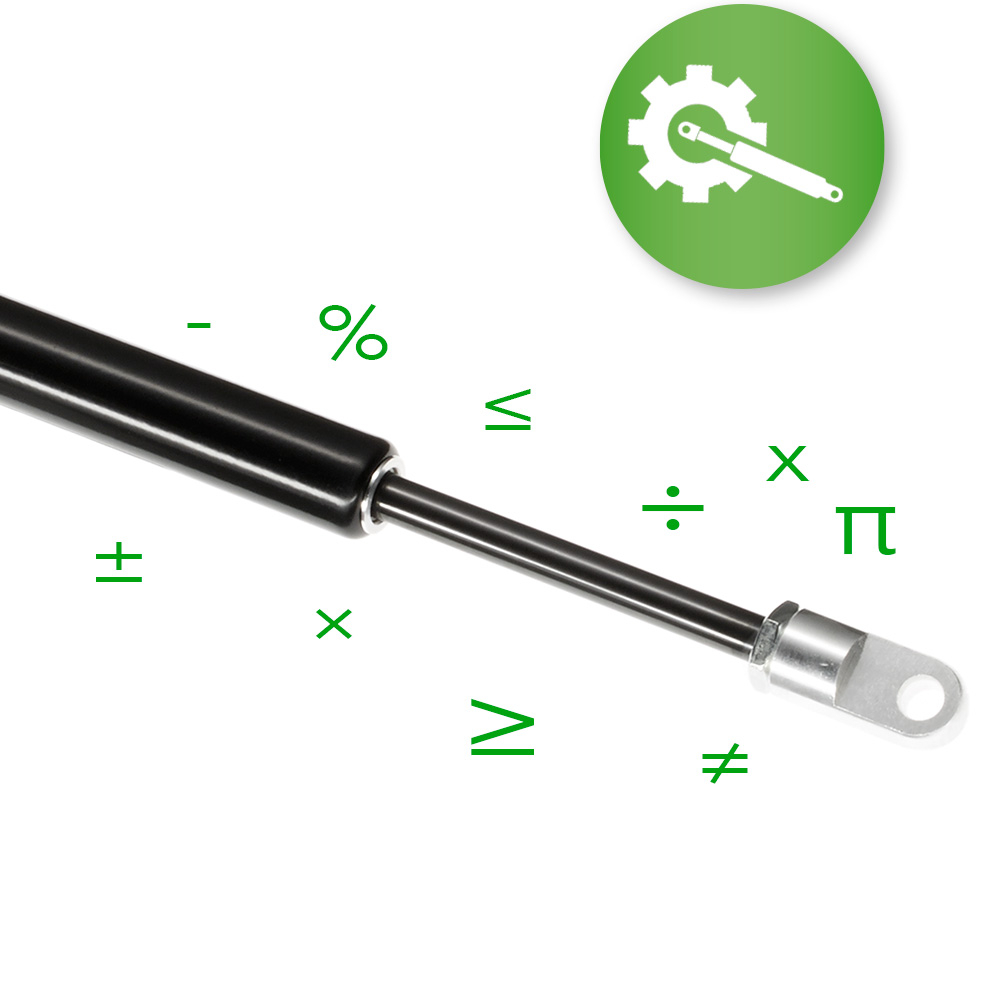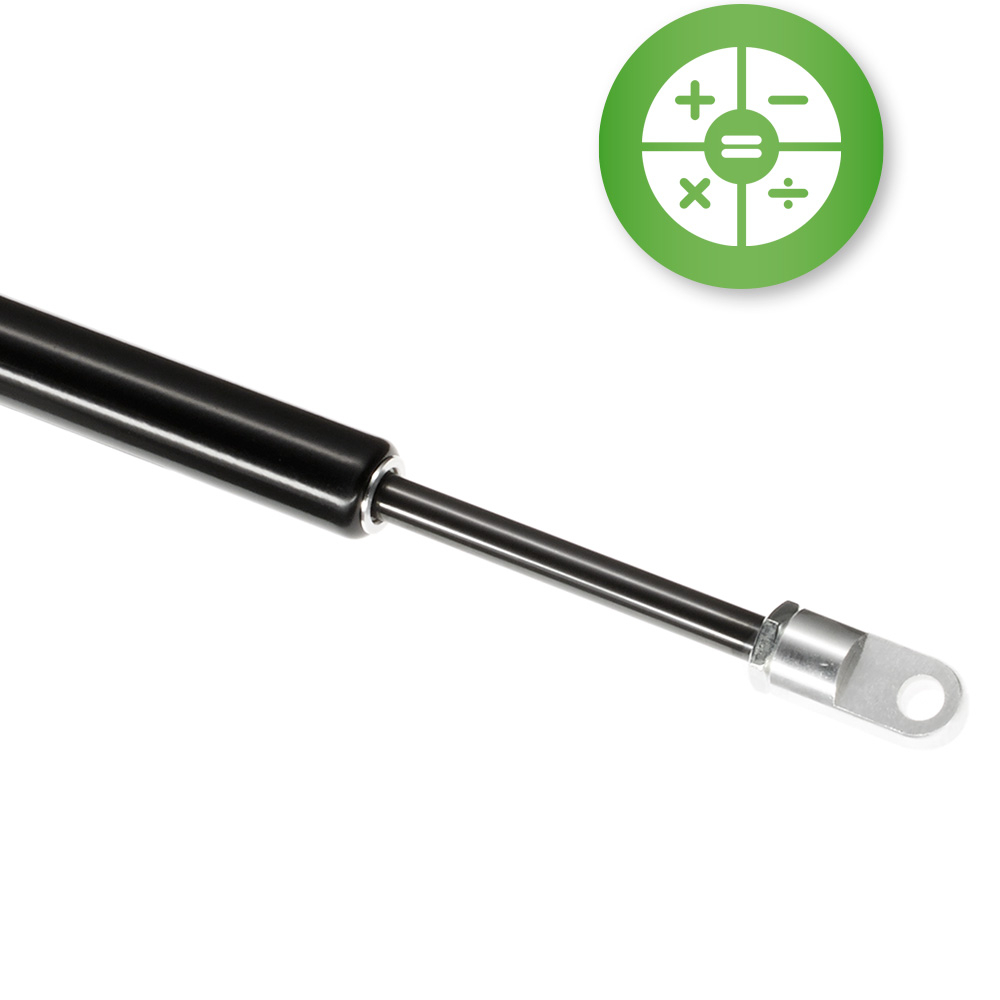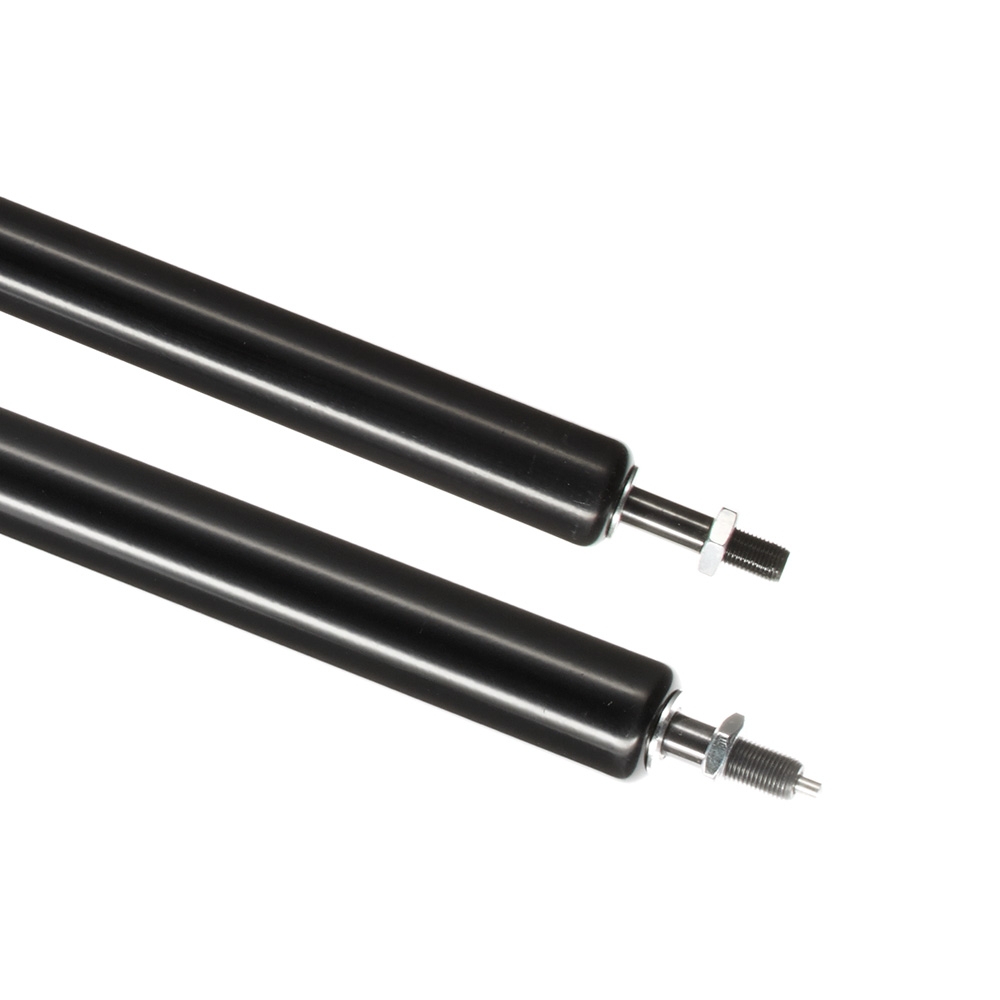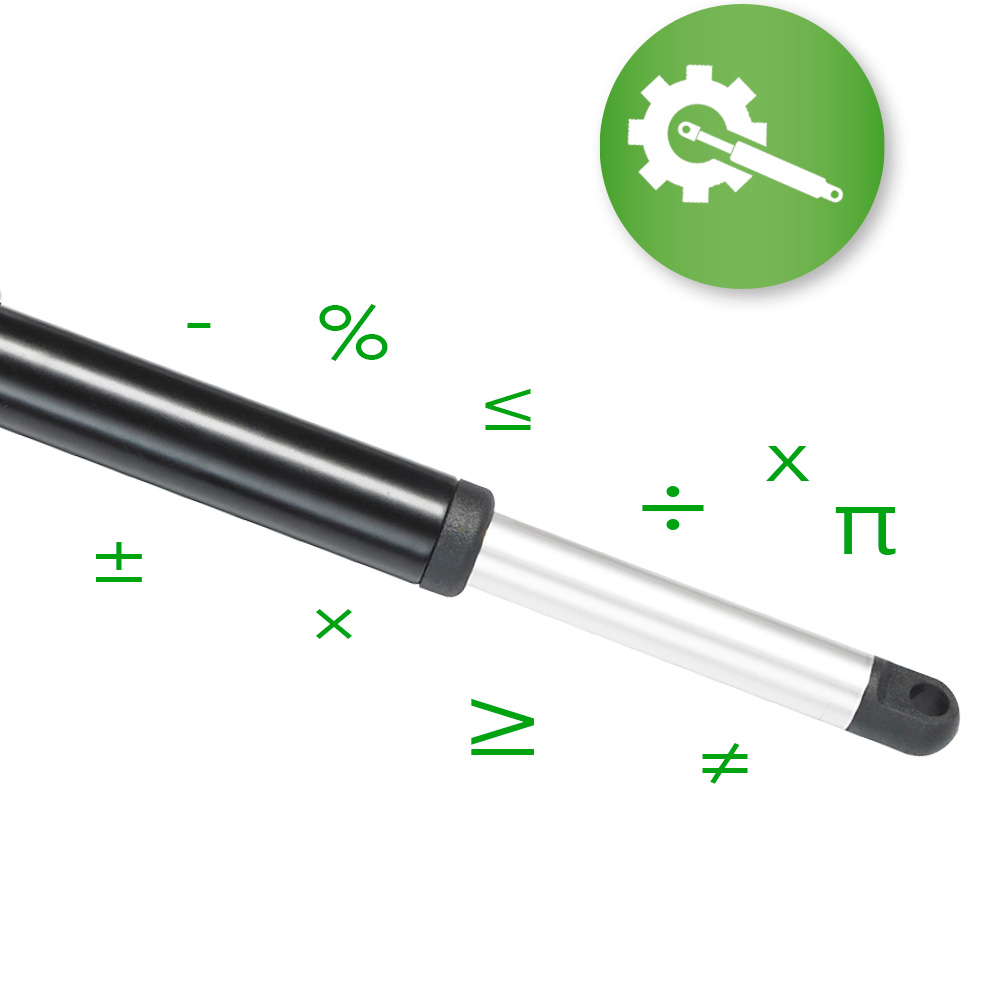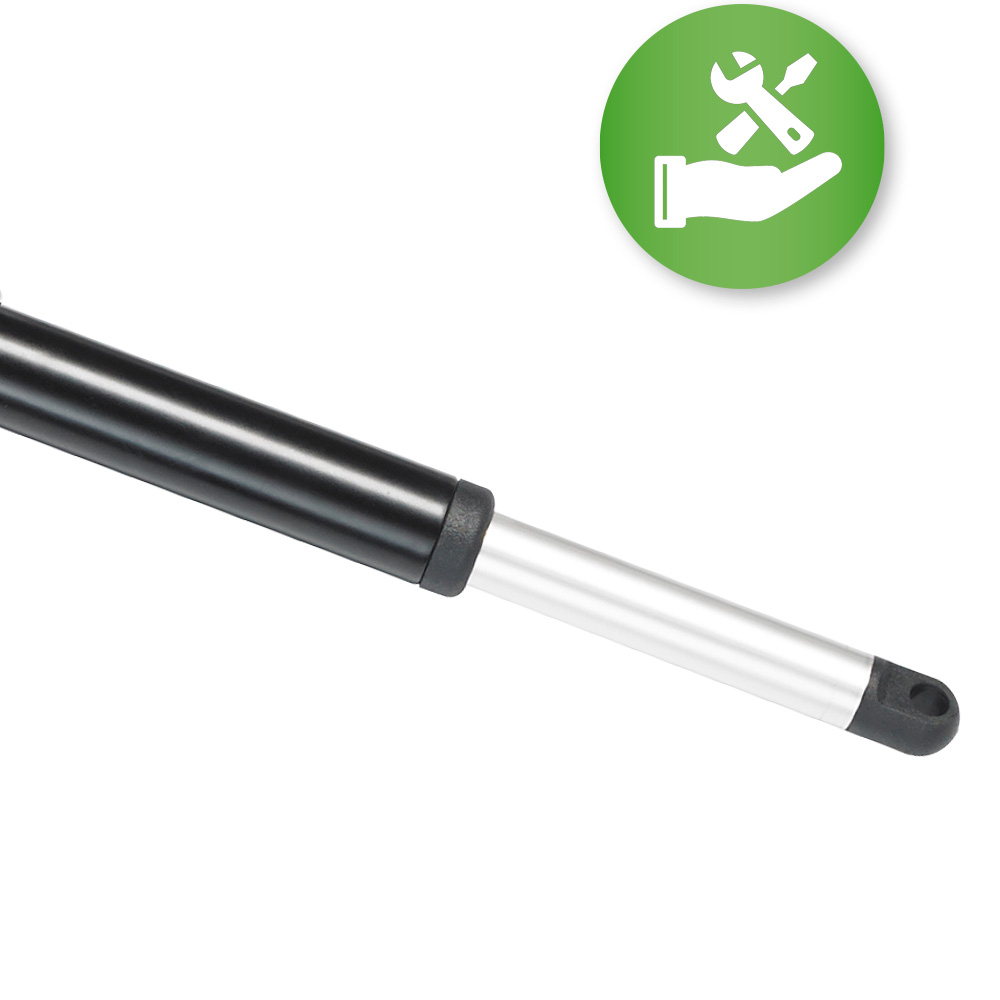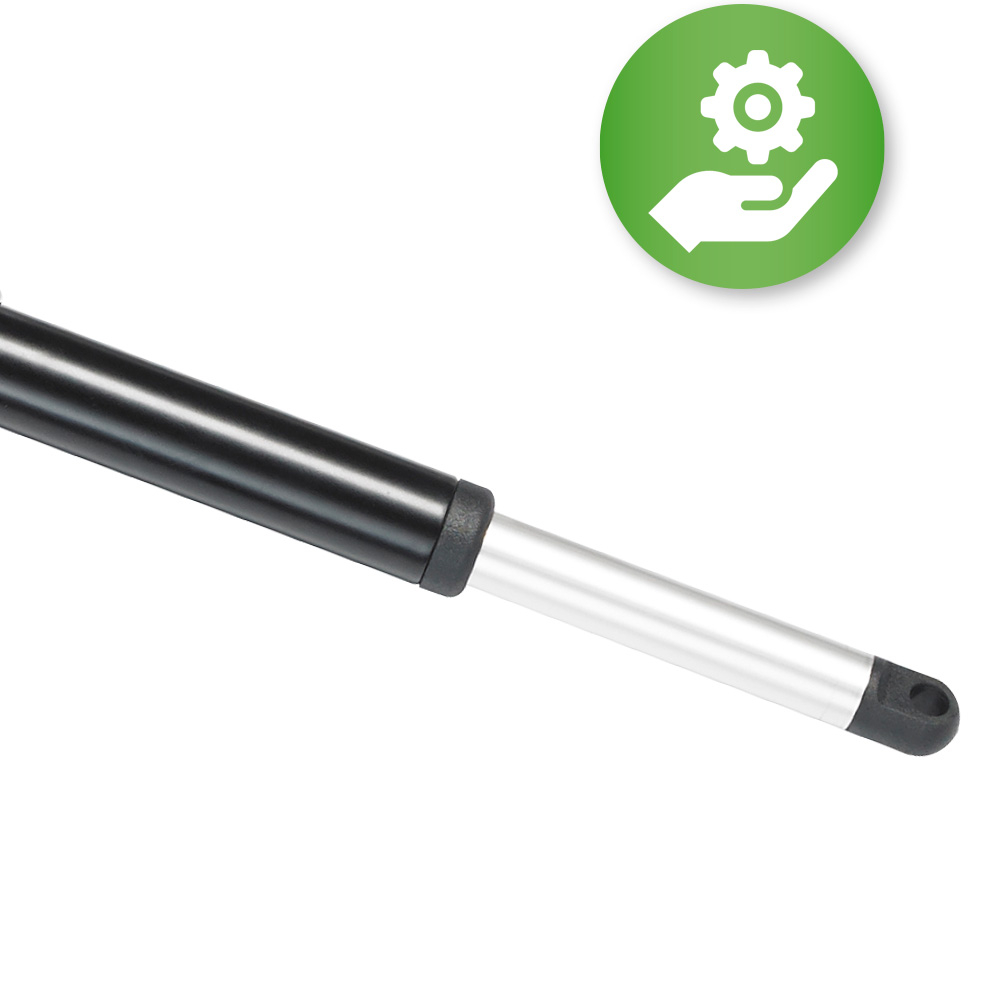Overview advantages and disadvantages of gas springs and actuators
Every situation has its own crucial characteristics, which influences the choice of a gas spring or actuator. The table below summarizes the main advantages and disadvantages of gas springs and actuators. If you are in need of tailor-made advice, please feel free to contact our specialists.
| Pros of gas springs | Pros of actuators |
|---|---|
| Greater diversity in designs and dimensions | No manual force required for height / position adjustment |
| Higher force range (up to 12,000N) | No progressivity |
| The cycle time has no maximum | Configuration of actuators is more flexible |
| Gas springs last longer and are therefore more sustainable. | Synchronous movements are possible |
| No external power supply is required to use gas springs. | Flexible position determination |
| Gas springs have a wider range of mounting options | Different speed settings |
| An opening angle greater than 90° is possible | Actuator pushes and pulls with the same force |
| Gas springs make no noise | Can be operated remotely |
| Gas springs are relatively cheaper |
It is a question that arises for many engineers in design processes: do I need an actuator or a gas spring? How do both solutions actually work and what are the advantages and disadvantages? BIBUS offers a lot of knowledge and possibilities in the field of height / position adjustment and is happy to help you select the right choice. Therefore, this article explains the pros and cons of gas springs and actuators.
The operation of gas springs and actuators
The main difference between the two solutions for height / position adjustment is in the operation. In a gas spring, the piston position is extended by the pressure in the cylinder, which is created by nitrogen. On this page the technique behind gas springs is described in more detail. In contrast to gas springs, actuators are fully electronic. Actuators are in fact driven by low-voltage DC motors.
An similarity between actuators and gas springs is the linear pull or push movements that are made. BIBUS supplies both options from the German manufacturer Bansbach. This renowned company has been supplying gas springs and other height adjustment options for over 40 years. Both the actuators and the gas springs are customer-specific, which guarantees quality and customization. The delivery times, warranty conditions and technical support are the same for the gas springs and actuators.
However, the technical aspects are very different. The summary below describes the main differences between actuators and gas springs. A clear overview can be found at the bottom of the page.
Advantages of gas springs
Gas springs have unique advantages over actuators. One of the main advantages is the great diversity in designs and dimensions of gas springs. Unlike actuators, where "only" three different sizes are possible, gas springs range from 3/8 mm to 30/70 mm in diameter. In addition, gas springs are produced in many different materials than actuators. Another way of showing the diversity of gas springs is the different versions that are available. Examples include gas springs with an internal click system, gas springs with dynamic damping, Easystop gas springs, gas tension springs, lockable gas springs and gas pressure springs.

Gas springs also know a wider range of mounting parts. Due to the wide range of gas springs, these can be used and placed in more diverse ways than with actuators.
An additional advantage of gas springs is the large force range. Gas springs can be used from 7N up to 12,000N, for actuators the limit is 10,000N.
Because both gas springs and actuators are produced customer-specific, it is not possible to speak of a fixed price. There are numerous factors that influence the price, such as the stroke, the type of cylinder and the material from which the actuator or gas spring is made. It can be said that gas springs are relatively cheaper to purchase than actuators.
In addition to the purchase price, the sustainability of products can also be decisive in the decision-making process. The average number of maximum strokes a gas spring can make is substantially higher (approximately 100,000) than with actuators (approximately 10,000). Here, gas springs are not only more sustainable for the environment, but also financially, because they need to be replaced less often.
Actuators require an external power supply to operate. This is not the case for gas springs. Gas springs are self-sufficient in energy, this is why they are often used in applications where no energy supply is possible. A good example of this is the tailgate of cars, which also works when the car battery is empty.
The gas springs in the tailgate of cars point to another advantage of this solution, namely the "noiselessness" with which objects can be adjusted in height and position, in contrast to actuators.
No electrical engineering knowledge is required for the configuration of gas springs, as is necessary with actuators. This makes the installation of gas springs more accessible.
Actuators can be attached using an eye, clevis or spherical bearing. There are more mounting options for gas springs. These can be attached with an eye, screw thread, clevis, hinge heads and ball joints.
Actuators function optimal until opening angle 85°, otherwise the hatch will start to shake. Gas springs can be positioned at an opening angle greater than 90°.
The final advantage of gas springs over actuators is the fact that there is no maximum cycle time. This does not apply to actuators, here the cycle time is a maximum of 10%, which means that after 2 minutes of operation, the actuator requires 18 minutes of rest.
The most frequently asked questions with regard to gas springs are answered in the gas springs faq overview. Using the buttons below you can immediately calculate the correct gas spring yourself.
Advantages of actuators
The actuator also has unique features which in many cases make it preferable to a gas spring. The most decisive advantage is the fact that actuators does not require manual force to adjust an object's height. Actuators can be supplied with a cable of up to 9 meters and / or can be activated with a variety of controls (a switch, remote control, etc.). Gas springs, however, must be operated manually.
 An additional disadvantage of the manual operation for gas springs is the fact that the movement that has to be made to get the piston rod back into the cylinder requires more force than the pushing movement (progressivity). This movement must also be made manually. This does not apply to actuators, both the pushing and pulling movements are made fully automatically and with equal force.
An additional disadvantage of the manual operation for gas springs is the fact that the movement that has to be made to get the piston rod back into the cylinder requires more force than the pushing movement (progressivity). This movement must also be made manually. This does not apply to actuators, both the pushing and pulling movements are made fully automatically and with equal force.
Calculating the correct actuator is considerably easier than calculating gas springs. The calculations of gas springs must be performed more accurately than for actuators, partly because of the manual force to be applied.
Not only calculating the actuators is easy, the configuration is also more flexible. Because the program of actuators can be adapted in software, it is possible to easily use the same actuator for multiple applications.
The actuator software programs allow two or more actuators to perform synchronous movements. This allows large or extremely heavy objects to be adjusted in height / position by several actuators.
Gas springs and gas tension springs always move completely to the end position. Actuators are flexible and offer a solution in this area, as actuators can be stopped at any position of the stroke. This does not apply to lockable gas springs
A gas spring is bound to the amount of nitrogen and the size of the cylinder, which determine the speed of the height / position adjustment. The speed of an actuator can be determined by means of software. You can also switch between various pre-programmed speed settings.
For actuators it is also possible to configure the correct actuator yourself. The pages below also offer the option of technical support and helping to generate CAD / STEP drawings.
The above information shows that there is no 'best solution' for height / position adjustment.





